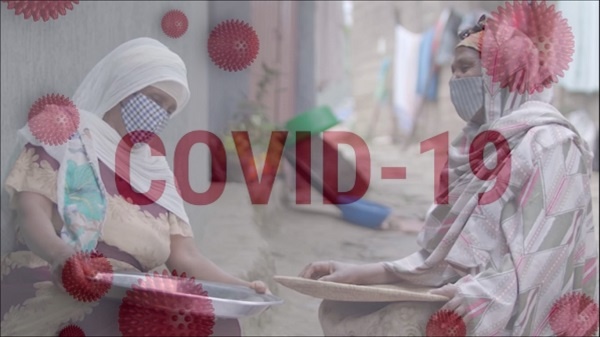
(FEWS NET) – The COVID-19 pandemic, and measures implemented in Ethiopia to slow its spread, have significantly constrained many poor households’ access to cash income. Many poor households are gradually re-engaging in income-generating activities despite continued movement restrictions; however, the broader economic slowdown has placed limits on their capacity to earn income. Movement restrictions have also negatively affected planting, which – alongside desert locusts – have driven moderate declines in Belg production and are expected to result in slight reductions in Meher production. These impacts — in combination with other shocks, including high food prices, conflict, and the forecast for below-average October to December Deyr rains — will constrain food access for millions of poor households in Ethiopia, driving above-average assistance needs through at least early 2021. The Government of Ethiopia and humanitarian partners should prepare for continued high assistance needs, with populations of greatest concern in parts of eastern Oromia and southern and southeastern pastoral areas.
As of August 20, more than 34,000 cases of COVID-19 have been confirmed in Ethiopia. However, the scale of the outbreak is likely worse than officially reported due to limited testing capacity: available data suggests that less than 0.2 percent of Ethiopia’s population has been tested for COVID-19 as of mid-August. The Government of Ethiopia has implemented measures to slow the spread of the virus, including closing international and domestic borders and schools, limiting domestic transportation services, and banning public gatherings. These control measures remain in place and broadly unchanged since April. Although there is increasing disregard for these measures among the public, some enforcement efforts and the broader economic slowdown, both globally and locally, have together negatively affected poor households’ capacity to earn income and have moderately impacted crop production in the country.
The interrelated factors of movement restrictions and declining economic activity have lowered migratory and local labor activities, two key income sources for poor households across Ethiopia (Figure). Demand for casual laborers has decreased notably in urban areas, as construction activities have declined. Furthermore, border closures have limited the movement of cross-border agricultural laborers who typically travel from Amhara and Tigray to eastern Sudan during the April to June cultivation period. It is likely that these migratory labor opportunities during the October to November harvesting period will also be limited due to continued border closures, driving a sharp decline in income among populations that rely heavily on this labor migration. Restrictions to movement within the country have also disrupted domestic agricultural labor migration, most notably to large commercial farms along the Awash River in Afar, Humera areas of Tigray, Metama in Amhara, and parts of Oromia and SNNP. This, coupled with lower access to inputs and impacts from desert locusts, resulted in below-average Belg production and is expected to drive moderate declines in Meher production.
Global economic impacts of the pandemic are also driving declines in income among poor households in Ethiopia. Many households in both rural and urban areas that rely on remittances from family members living overseas have seen a reduction in this income source. Moreover, given the sharp decline in global tourism, which accounted for nearly 10 percent of Ethiopia’s GDP in 2018 according to the Central Statistics Authority (CSA), the demand for hotels, drivers, artisanal crafts, and translators, has decreased, resulting in lower income among populations working in these sectors. Overall, roughly 40 percent of households surveyed nationally by the World Bank in June reported a reduction in income since the start of the pandemic, with a small percentage indicating a total loss of income.
The reductions in income among millions of Ethiopians come on top of other shocks, including elevated staple food prices, an uptick in civil insecurity in late June, and the ongoing conflict along the Oromia/Somali border. Furthermore, in addition to moderately below-average Belg production and expected slightly below-average Meher production, a deterioration in livestock conditions and value is anticipated near the end of 2020 in southern and southeastern pastoral areas with forecast below normal October to December rains. Overall, humanitarian assistance needs across Ethiopia are expected to remain notably higher than in recent years. Due to the impacts of COVID-19, there has also been a moderate shift in the location of the population in need relative to what is typical, with an increasing number of urban poor households requiring assistance, though rural populations still constitute the majority of the population in need. The Government of Ethiopia and the humanitarian community should prepare for continued high needs, especially in southern and eastern parts of the country, where Crisis (IPC Phase 3) outcomes are expected through at least early 2021.
Source: FEWS NET
